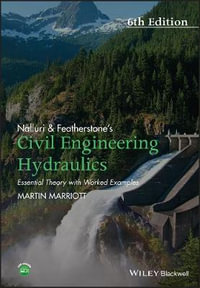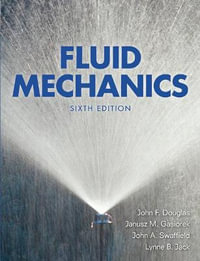Most natural and industrial flows are turbulent. The atmosphere and oceans, automobile and aircraft engines, all provide examples of this ubiquitous phenomenon. In recent years, turbulence has become a very lively area of scientific research and application, attracting many newcomers who need a basic introduction to the subject. An Introduction to Turbulent Flow offers a solid grounding in the subject of turbulence, developing both physical insight and the mathematical framework needed to express the theory. It begins with a review of the physical nature of turbulence, statistical tools, and space and time scales of turbulence. Basic theory is presented next, illustrated by examples of simple turbulent flows and developed through classical models of jets, wakes, and boundary layers. A deeper understanding of turbulence dynamics is provided by spectral analysis and its applications. The final chapter introduces the numerical simulation of turbulent flows. This well-balanced text will interest graduate students in engineering, applied mathematics, and the physical sciences. It will also be a useful reference for practising engineers and scientists.
Industry Reviews
'... chapters are well balanced and self-contained and the reader is naturally guided through the subject... provides a balanced introduction to the main elements of the study of turbulence in an uncluttered and literary fashion ... an easily digestible introduction to turbulent flows.' Brian Briscoe, The Times Higher Education Supplement 'It takes a shrewd fluid dynamicist to avoid the subject of turbulence for long. It lies at the core of so much of what we observe, from the eruption of solar flares to reversals in the Earth's magnetic field or the vagrancies of the weather. Introduction to Turbulent Flow is a welcome attempt to bridge that vast chasm which exists between the heuristic, undergraduate accounts of turbulence and the many forbidding monographs on the subject.' P. A. Davidson, Journal of Fluid Mechanics '... a pedagogical platform giving the tools for the study of more specialized textbooks ... the book is well written and covers most of the current research topics in turbulence ... This reviewer certainly recommends the purchase of Introduction to Turbulent Flow to all the libraries as a very nice complement to the existing texts ... this book provides a solid background for the comprehension of more specific text and papers, therefore it can well complete the collection of personal fluid dynamics books.' R. Verzicco, Applied Mechanical Review 'The character of a book is determined at least partly by the care with which the material is presented, and this one amply demonstrates the care that the authors have invested ... the authors have succeeded in the task they set out to do, and I recommend the book to all students of turbulence, no matter what their persuasion.' Katepalli R. Sreenivasan, Physics Today '... this inspired and first-rate book will establish itself as the most convenient and outstandingly useful basic study material eagerly sought by students of turbulence ... In short, you will seldom have an opportunity to have a better balanced introduction to the main elements of the study of turbulence. Indeed a book of exceptional merit.' Current Engineering Practice
























